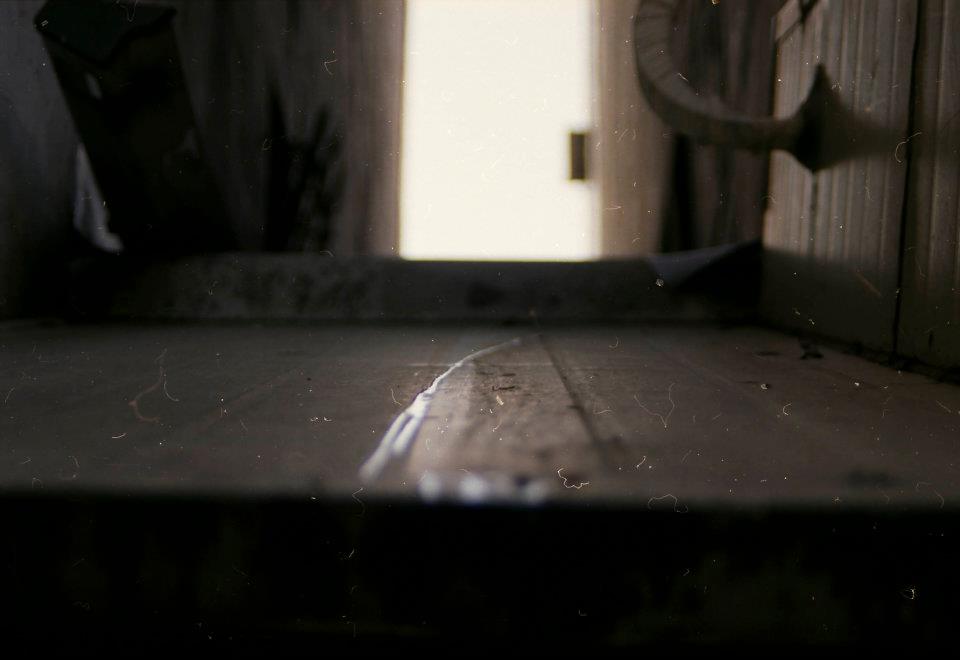
Rainier and Othello is not an inviting place. You know the landscape: one and two story buildings, mostly residential, with buckling and otherwise eroded and collapsing sidewalks. There’s the auto parts store, with the owner standing just inside the doorway with his hands on his hips, shaking his head from who knows how many robberies; the Western Union exchange across the way; a Mexican restaurant on the southeast block, seemingly closed more often than open. Iron bars cover the windows of all these establishments and the homes behind them.
Then we have the famous Valero Gas Station (yes, capitalization is necessary), dominating the landscape on the southwest corner. In the same way the Morrison Hotel downtown isn’t the Morrison without an ambulance parked out front, so too is the Valero Gas Station not the Valero without a crowd of guys and gals loitering in, on and around. There are men who more or less live here, dealing, fighting, drinking, and shooting their way through life in a manner far riskier than necessary. Tricked-out classic Oldsmobiles and American muscle cars roar into the lot, throaty and gleaming and oversized, trading people or goods with dilapidated Camrys and unwashed, decade-old Lexuses. Occasionally the folks residing will get on the bus, but generally most don’t, preferring to finish their beer or light another joint, wait for a delivery, or continue a conversation or argument. The fluorescents of the gas station behind only dimly illuminate them as silhouettes in the darkened bus shelter, looming and receding in size, expansive figures in puffy jackets and sagging jeans, shuffling amongst a patina of litter their own in the making.
There are also regular working-class folk who use this stop to go home, and they leave the zone quickly, keeping their head down and walking in a path determined, away from this mass of unpredictability. There’s a regular lady who asks to be let off thirty feet past the bus stop, and that short distance can be the difference between life and something ugly. These are places where a little bit of help can be significant.
Leroy was on the bus one evening, out for a ride, just to talk. A thought occurred to me as we pulled up to the great Valero.
“Hey, you wanna know something kinda crazy?”
“Wha’s that?”
“So you see this bus stop right here, how it always looks really, super sketch.”
“It looks fuckin’ terrible.”
“Yeah, every time we come through here,”
“It looks fuckin’ awful.”
“It reminds me of being in South Central.”
“I know, it’s like Philly.”
“It looks like a disaster.”
“Yeah.”
“And I used to drive up to that stop feelin’ kinda apprehensive, a little bit nervous, you know?”
“Oh yeah!”
“But, the crazy thing is, and I just realized this recently. So I’ve been driving number 7 through here since 2009. But check this out. The crazy thing is, man, in all that time, I’ve never once had a single problem at this intersection.”
“You serious?”
“Yeah, can you believe that? Look at this place. The whole time, every time I’ve ever rolled through here, never had a single problem with any of these dudes. It always, everything always just works out. They get on, I say hey. Can you believe that?”
“Uh. No!”
“I know, it’s amazing!”
“Wow! Damn. Well, that’s cool!”
“So, yeah. Go figure!”
I don’t think it’s possible to overstate how powerful kindness is. In a phrase or evanescent gesture you send so many messages– esteem, consideration, tolerance, appreciation, and the egalitarian, loving belief that we both have a place here, despite our significant differences… I’ve heard tell of some of the things that happen at this intersection, and seen their aftermath.
But somehow, this 7 has so far averted the disasters here. I greet them all as if they’re friends of mine, and since I’ve been part of the neighborhood for so long, many of us really are friends, and they jump on happy to see me. The folks treat me as they are treated, and as the days turn to years we accumulate our mutual good works, dignity seeping through the cracks as grains of sand, something besides weeds buckling through that asphalt, our well-wishes and roundhouse waves building to a new kind of normal.
Editor’s Note: The last paragraph and title of this article have been changed to better reflect the meaning of the article and avoid misinterpretation. To see the concerns expressed please read the comments.
Nathan Vass is an artist, filmmaker, photographer, and author by day, and a Metro bus driver by night, where his community-building work has been showcased on TED, NPR, The Seattle Times, KING 5 and landed him a spot on Seattle Magazine’s 2018 list of the 35 Most Influential People in Seattle. He has shown in over forty photography shows is also the director of nine films, six of which have shown at festivals, and one of which premiered at Henry Art Gallery. His book, The Lines That Make Us, is a Seattle bestseller and 2019 WA State Book Awards finalist.



